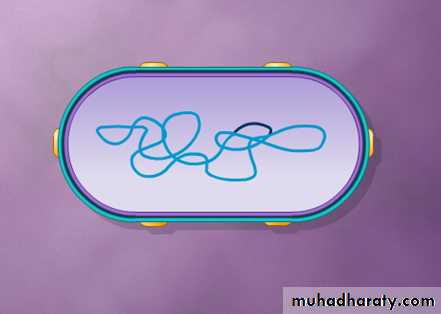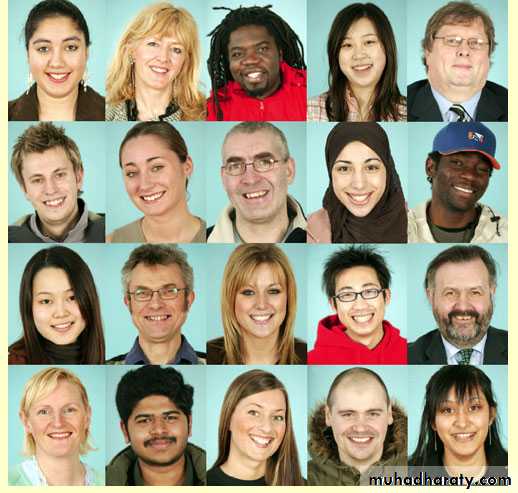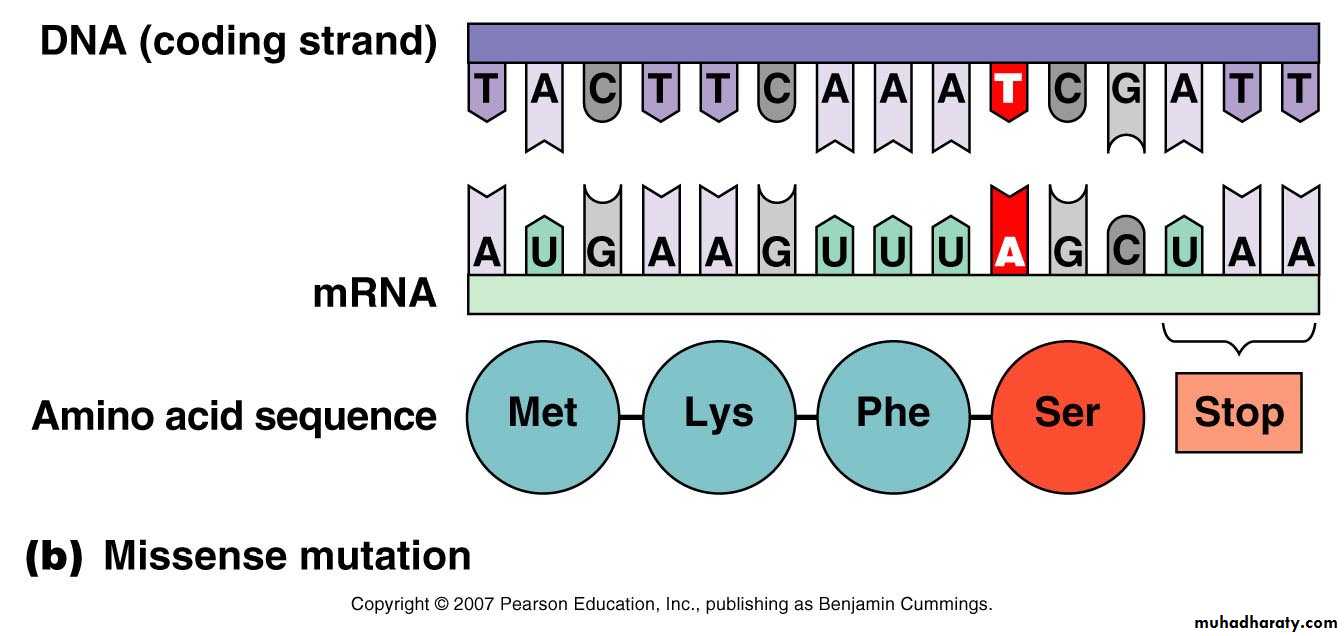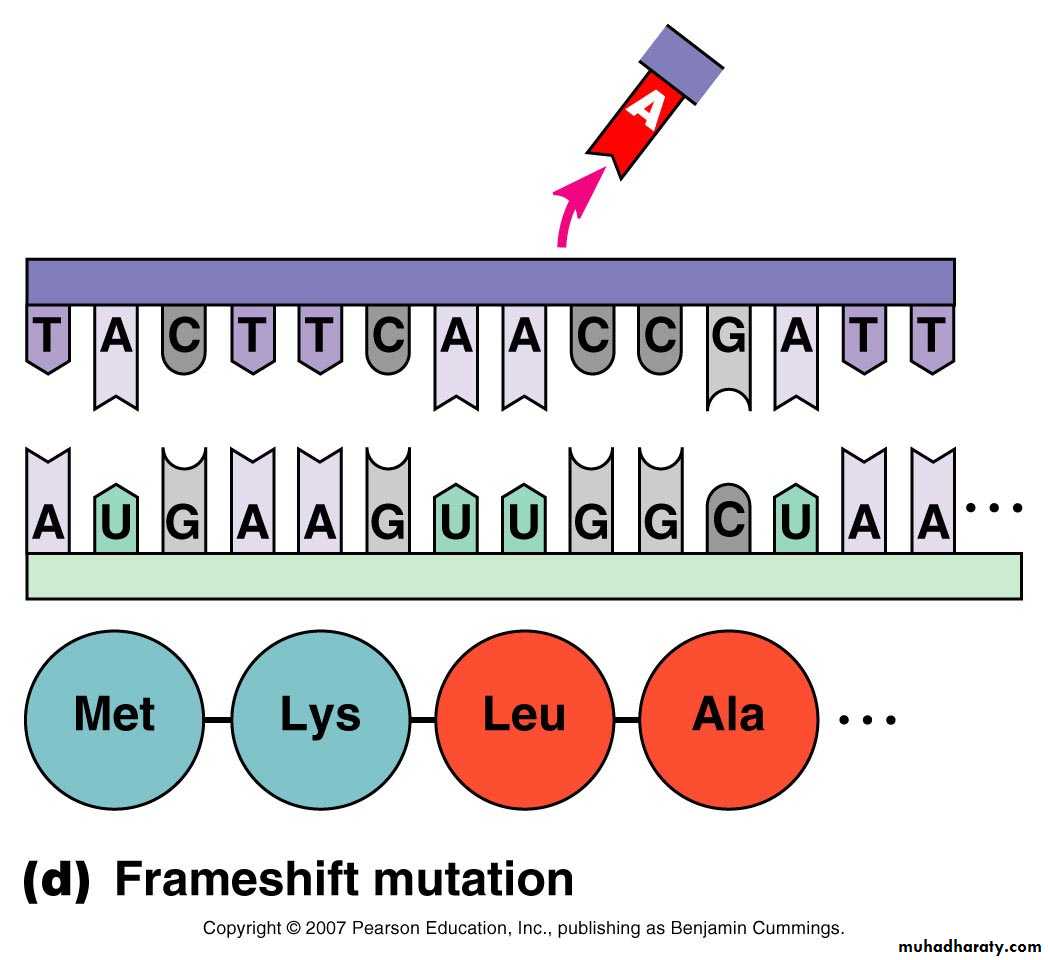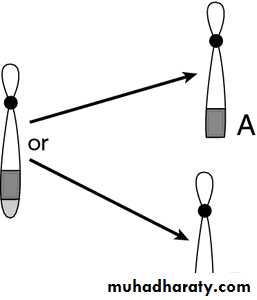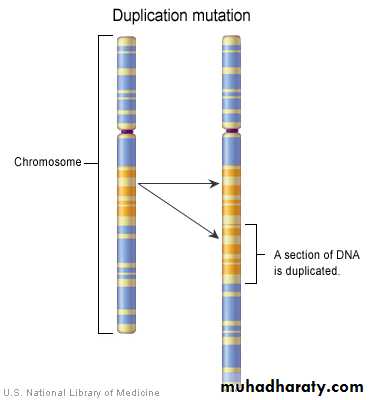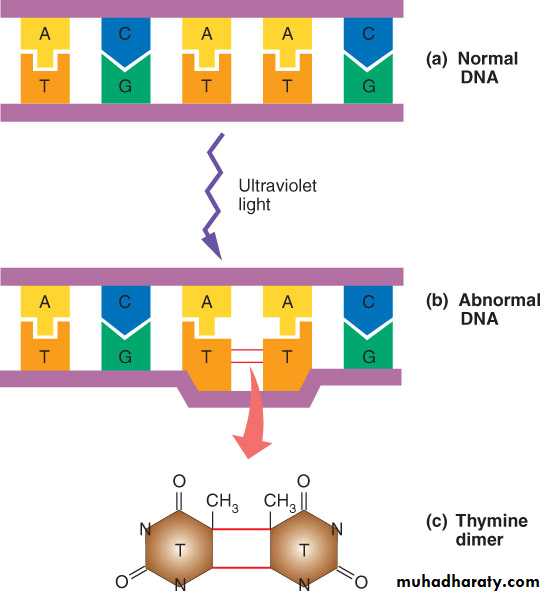Microbial Genetics
Gene Transfer: RecombinationIn bacteria genetic transfer (recombination) can happen three ways:
Transformation
TransductionConjugation
• The result is a recombinant cell that has a genome different from either the donar or the recipient.
Gene Transfer:Transduction
A segment of DNA is transferred from one bacterial cell to another by a bacterial virus called “bacteriophage” or phage.
Gene Transfer:Transduction
Once the bacteriophage” attaches to the bacterial cell wall, it injects its nucleic acid into host cell.Gene Transfer:Transduction
A phage enzyme is produced that breaks down the host DNA into small fragmentsGene Transfer:Transduction
Phage DNA is replicated and phage coat proteins are producedGene Transfer:Transduction
During the formation of mature phage particles, a few phage heads surround fragments of bacterial DNA instead of phage DNA.Gene Transfer:Transduction
The phage particles carrying the bacterial DNA infects another bacterial cell, transferring the bacterial DNA to a new cell.Gene Transfer:Transduction
The bacterial DNA being injected to a new host cellGene Transfer:Transduction
When the bacterial DNA introduced into a new host cell, it can become integrated into bacterial chromosome , thereby transferring genes to the recipient.Microbial Genetics
Genetic Variations and MutationsGenetic Variations : Introduction
Roughly 99.9 % of human genomes (3.2 billion bases) are the same between any two people. Amazing!!!!!!!!!!!• The remaining tiny fraction of the genome, 0.1 % (several million bases)-makes a person unique. This small amount of variation determines how a person looks, or the diseases he or she develops.
What Is the Genetic Variation?
Heritable variation within and between populations of organisms
Sources of Genetic Variation
Where does genetic variation come from?Mutations (ultimate sources of all genetic variations)
Recombination of chromosomes that occurs during sexual reproductionGenetic Variation: Mutations
Permanent change in the DNA sequenceOutcome depends on:
What gene(s) is (are) affected
where in the gene the change occurs, (i.e., in the coding or non-coding region)
the exact nature of the change.
Mutations : Outcome• Most mutations have no known effect at all because they occur in non-coding regions of the DNA
• In addition, there are some mutations that do occur in coding regions of DNA, yet they have no known effect
• All these are silent mutations
Mutations : Outcome
Some of the mutations that occur in the coding regions of genes have "harmless" effects.They can, for example, change the way a person "looks." Some people have blue eyes, others brown; some are tall, others short; and some faces are oval, others round.
Mutations : Outcome
There are a group of mutations in coding regions that result in harmful effects.They cause disease because changes in the genome's instructions alter the functions of important proteins that are needed for health.
For example, diabetes, cancer, heart disease, and hemophilia all result from mutations that cause harmful effects.
Mutations : Outcome
There are genetic mutations that have "latent" effects. These variations, found in coding regions, are not harmful on their own, However, such mutations cause some people to be at higher risk for some diseases such as cancer, but only after exposure to certain environmental agents. They may also explain why one person responds to a drug treatment while another does not.Mutations : Outcome
Finally, there are genetic mutations that have “Helpful" effects. These variations, usually induced by scientist either to study a particular gene or correct abnormal gene. This is called “gene therapy”.
Mutations: Changes in DNA
Spontaneous Mutations:occur in the natural environment without the addition of mutagens (agents that cause mutations)
Occur randomly and spontaneously
Induced Mutations:
Mutations that are created by the addition of mutagensSpontaneous Mutations
Two types:DNA Mutations: affect one base pair in the DNA
Chromosomal Mutations: affect entire section of DNA on the chromosomeSpontaneous Mutations: DNA Mutations
Point mutation (single nucleotide polymorphism): a mutation that alters ONE base of DNA sequenceTypes of point mutations:
Substitution
Deletion
Insertion
Point Mutations: Substitution
• Most common type of point mutation• Mistake during DNA replication, incorrect base incorporated into DNA
Point Mutations: Substitution
Point mutation: SubstitutionSilent mutation
The substitution results in a codon that codes for the SAME amino acid as the original.
Therefore the protein structure and function is not altered.Point Mutations: Substitution
Point mutation: SubstitutionMissense mutation
A base substitution results in a different codon.
Therefore a different amino acid is coded for.
This can alter the structure and function of the overall protein.
like in Sickle Cell Anemia.Sickle Cell Anemia
Point Mutations: Substitution
Point mutation: SubstitutionNonsense mutation
The substitution results in the original codon being converted into a STOP codon
This does not “make sense” to the translation machinery so translation STOPS
This results in a truncated (shortened) protein
Spontaneous Mutation: Base-pair deletion or insertion
Insert or delete a nucleotide- very disastrousShifts codons of DNA when transcribed into RNA (also called frame shift mutation)
All nucleotides downstream of mutation will be grouped into improper codons, and wrong amino acids will be addedProtein will be non-functional
Chromosomal mutations: permanent changes in the DNA that alter the chromosome itself
TypesDeletion
Duplication
Inversion
Translocation
Mutations: Chromosomal Mutations
Chromosomal Mutations: Deletion• The loss of a portion of a chromosome
•
• Cri-du-chat syndrome
• Infant cries like a cat• Respiratory problems, early death
Deletion in chromosome 5
Chromosomal Mutations: Dublication
• A portion of a chromosome is duplicated (copied) more than once• Can be detrimental if it occurs within a gene region
•
Chromosomal Mutations: Inversions
A segment of a chromosome is broken in two places, reversed, and ligated back together
Detrimental if it occurs in the middle of a geneChromosomal Mutations: Translocations
A piece of a chromosome is broken off and joined to a DIFFERENT chromosomeThey can cause problems during metaphase of meiosis I with homologous pairing
Can change the expression of genesSome leukemias can result from translocations
Mutations: Induced Mutation
Mutations are induced by either certain chemical mutagens or physical mutagensSometimes scientists intentionally mutate DNA to study it
Mutagens are agents or substances can cause mutations.
Induced Mutations : Chemical MutagensExample: nitrous acid (HNO2)
Converts adenine so it no longer pairs with thymine
Instead pairs with cytosineChemical Mutagens- Nucleoside Analogs
Compounds that resemble bases closelyPhysical Mutagens: Radiation









